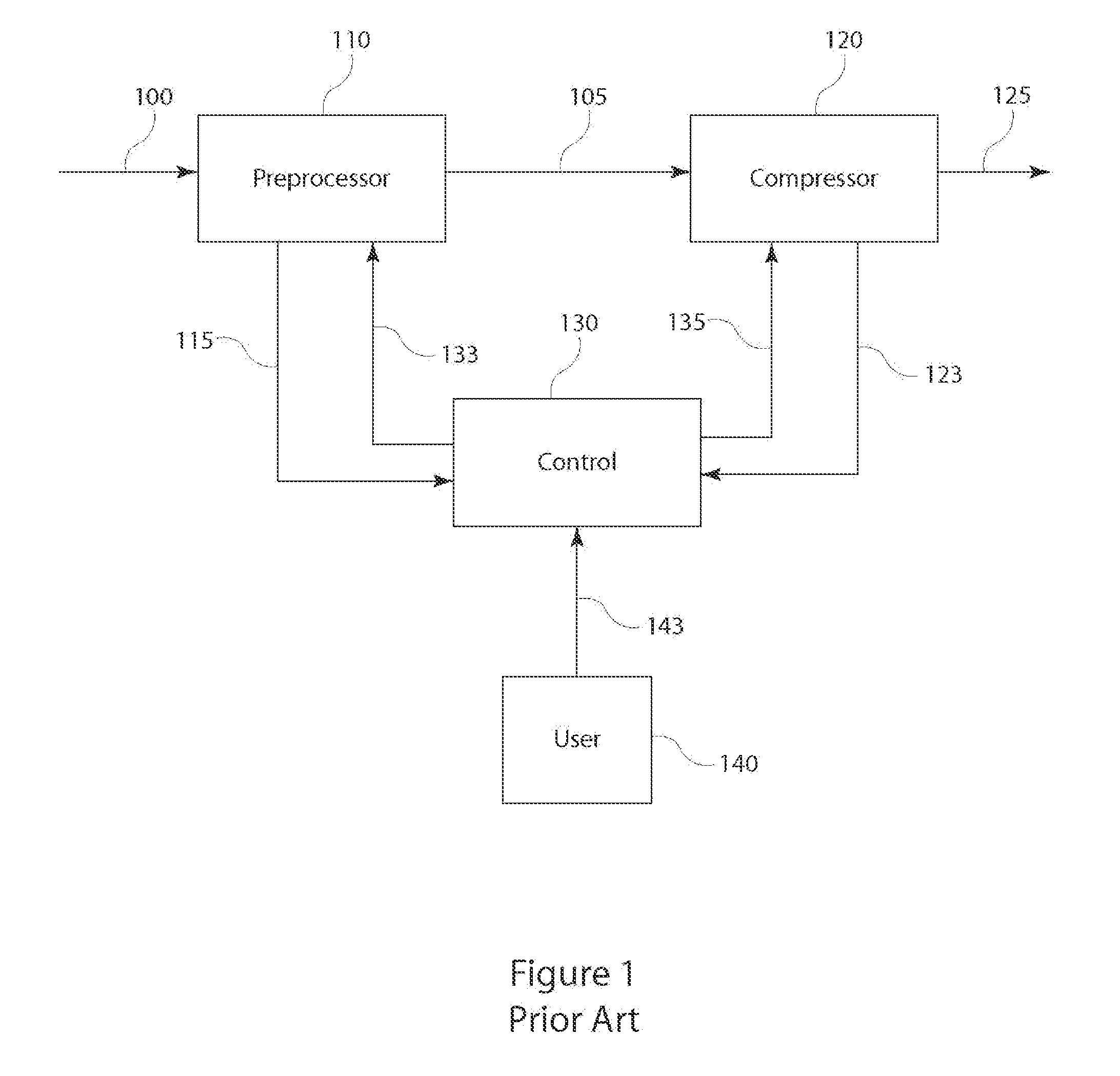Enhanced control for compression and decompression of sampled signals
a sample signal and compression technology, applied in the field of compression and decompression of sampled signals, can solve the problems of lossy compression, insufficient bit rate reduction, and distortion of the characteristics of the reconstructed signal
- Summary
- Abstract
- Description
- Claims
- Application Information
AI Technical Summary
Benefits of technology
Problems solved by technology
Method used
Image
Examples
Embodiment Construction
[0032]FIG. 1 is a block diagram of a signal compressor previously described in the '533 patent. The preprocessor 110 performs various selectable operations on the input signal samples 100 to produce signal samples 105 with lowpass or other desired characteristics for the compression operations of the compressor 120. Some of the preprocessor operations will be described below with respect to FIG. 9. The preprocessor 110 can also measure various characteristics of the signal samples, such as center frequency, noise floor and bandwidth. The compressor 120 applies selected operations that compress the preprocessed signal samples 105 including computing first or higher order differences, or derivatives, of the preprocessed signal samples, approximating certain signal samples through mathematical operations on other signal samples, encoding (such as Huffman encoding) and bit-packing. The control module 130 produces control parameters for operations of the preprocessor 110 and the compress...
PUM
 Login to View More
Login to View More Abstract
Description
Claims
Application Information
 Login to View More
Login to View More - R&D
- Intellectual Property
- Life Sciences
- Materials
- Tech Scout
- Unparalleled Data Quality
- Higher Quality Content
- 60% Fewer Hallucinations
Browse by: Latest US Patents, China's latest patents, Technical Efficacy Thesaurus, Application Domain, Technology Topic, Popular Technical Reports.
© 2025 PatSnap. All rights reserved.Legal|Privacy policy|Modern Slavery Act Transparency Statement|Sitemap|About US| Contact US: help@patsnap.com



